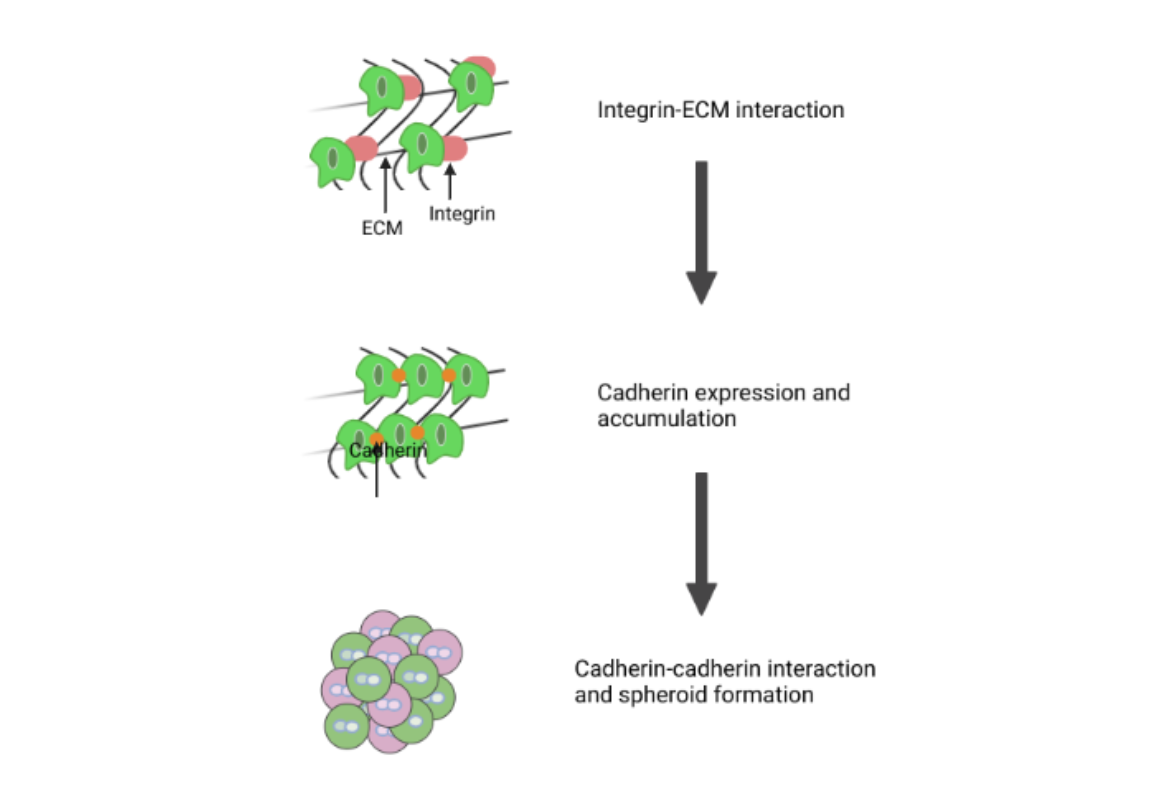
Spheroid formation: Mechanism and role of the substrate
Spheroids grow in three dimensions to form a sphere-like structure which mimics cell in vivo microenvironment more closely than conventional 2D monolayer cell culture. They can be formed from single or multiple cell types that are commonly used in research and drug development.
Mechanism of spheroid formation:
The spheroid formation mechanism is a complex process that involves cell-cell and cell-matrix interactions. The cells in suspension or on a substrate initially self-assemble through weak physical interactions. Self-assembly is affected by nutrient gradient, oxygen, and growth factors in the culture medium. These initial cell aggregates can then undergo compaction through the contraction of actin-myosin filaments, which generates mechanical forces and increases cell-cell adhesion. The compaction process can be influenced by various factors, such as the ECM components, the stiffness of the substrate, and the presence of growth factors or other signaling molecules (1,2).
Role of the substrate in spheroid formation:
The importance of the substrate in spheroid formation depends on the specific application and the type of cells used. Different substrates can affect the formation, size, and shape of the spheroids, the behavior of cells and their function within spheroids, and eventually the experiment outcome.
Hydrophilic substrates can promote strong cell aggregation, compaction, and spheroid formation, whereas hydrophobic substrates can inhibit spheroid formation and promote cell attachment and spreading. Substrates with varying degrees of stiffness can also influence the spheroid formation and the cellular responses to the microenvironment (3).
Therefore, substrate selection should be carefully considered based on the desired spheroid properties and applications. Currently available plates for 3D culture do not always provide optimal conditions for cell aggregation, often leading to inconsistent spheroid formation. BIOFLOAT™ surfaces overcome these limitations with its advanced surface coating for 3D cell culture and provide uniform spheroid formation for reliable and fast results. The pre-coated BIOFLOAT™ plates and an easy-to-use FLEX coating solution by faCellitate allow flexible experimental designs with a wide range of cell types, including challenging cells.
References
1. Ryu NE, Lee SH, Park H. Spheroid Culture System Methods and Applications for Mesenchymal Stem Cells. Cells. 2019 Dec 12;8(12):1620. doi: 10.3390/cells8121620. PMID: 31842346; PMCID: PMC6953111.
2. Maritan SM, Lian EY, Mulligan LM. An Efficient and Flexible Cell Aggregation Method for 3D Spheroid Production. J Vis Exp. 2017 Mar 27;(121):55544. doi: 10.3791/55544. PMID: 28448014; PMCID: PMC5564434.
3. Lee D, Cha C. The Combined Effects of Co-Culture and Substrate Mechanics on 3D Tumor Spheroid Formation within Microgels Prepared via Flow-Focusing Microfluidic Fabrication. Pharmaceutics. 2018 Nov 13;10(4):229. doi: 10.3390/pharmaceutics10040229. PMID: 30428559; PMCID: PMC6321249.



